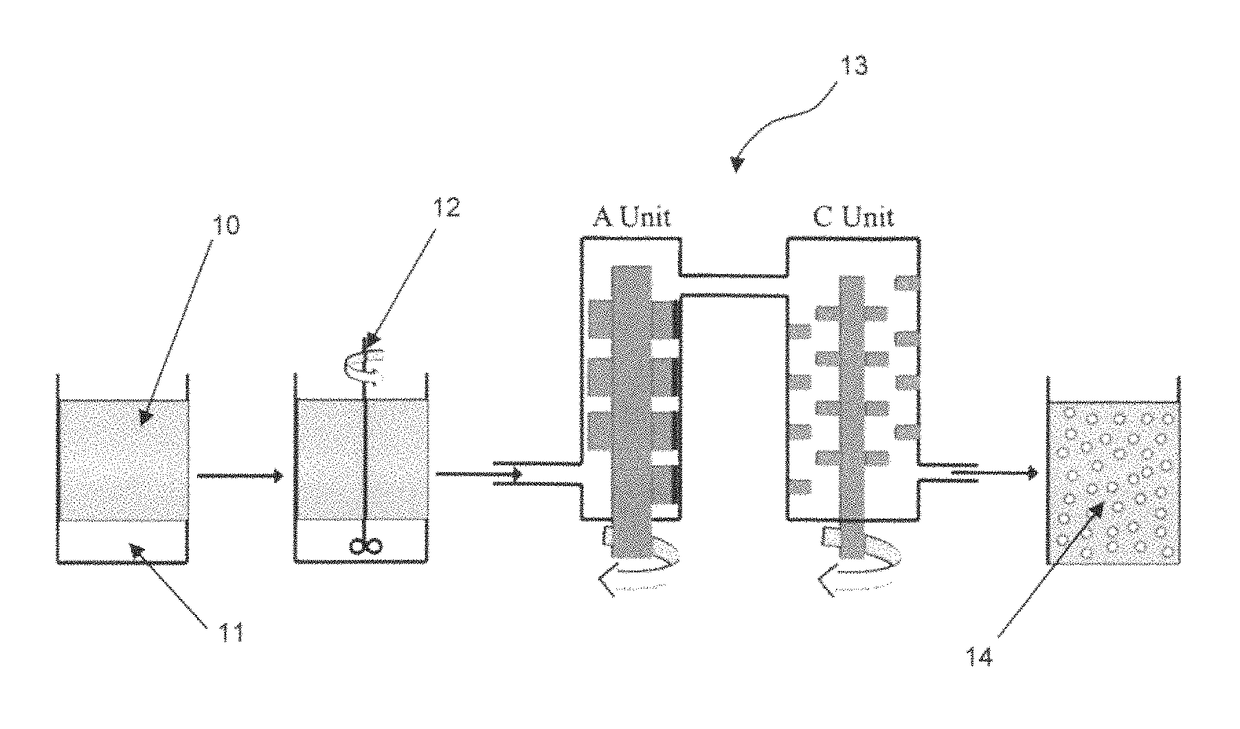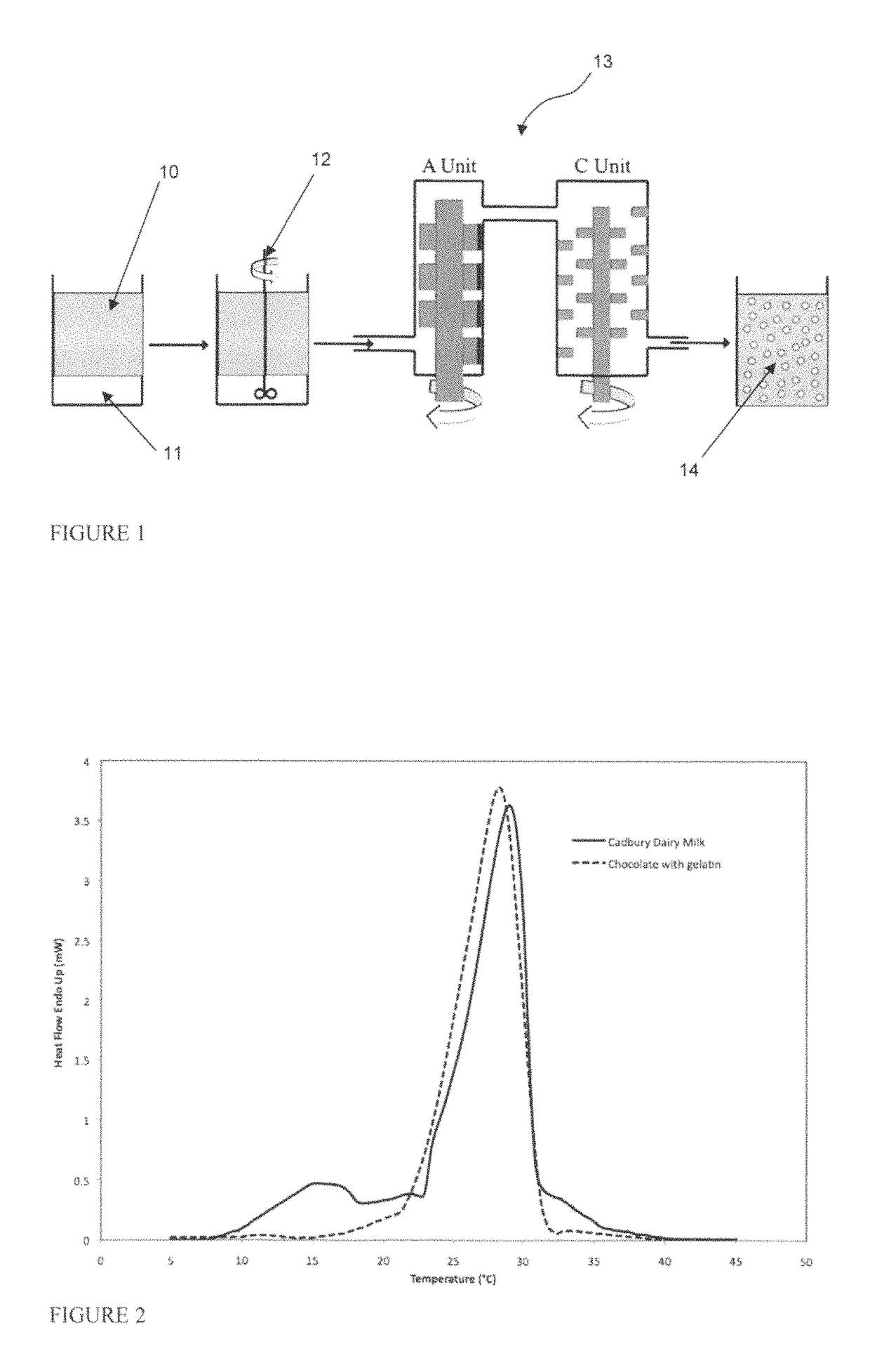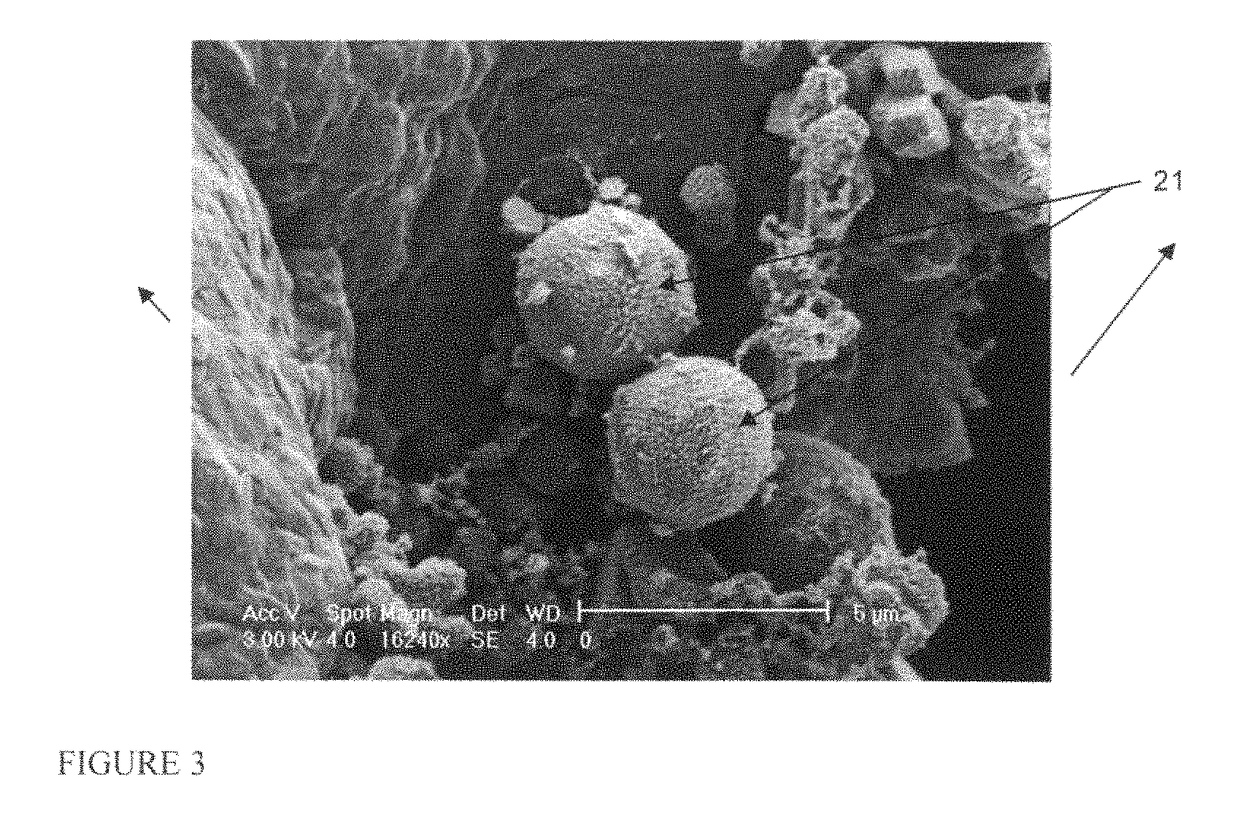Low fat chocolate
a low-fat chocolate and chocolate technology, applied in the field of low-fat chocolate, can solve the problems of not meeting customer acceptance, production of low-fat chocolate has presented particular problems, and cannot accept healthier alternatives that have poor taste and/or texture to traditional products, etc., to achieve the effect of reducing the amount of cocoa butter, and reducing the melting poin
- Summary
- Abstract
- Description
- Claims
- Application Information
AI Technical Summary
Benefits of technology
Problems solved by technology
Method used
Image
Examples
example 1
[0056]Firstly a cocoa butter emulsion was made comprising 20% aqueous phase (made up of 10% gelatine and 90% water) and 80% lipid phase (made up of 96% cocoa butter and 4% polyglycerol polyricinoleate (PGPR)). The water used to make up the aqueous phase was distilled water. The source of the gelatine was porcine skin (Fluka) and was a high gel strength grade (250 g bloom). The cocoa butter used was a commercial grade. The PGPR was supplied by Kerry Bio-Science.
[0057]The cocoa butter and PGPR were heated together using a water bath to a temperature of 60 degrees C., in order to melt all six forms of cocoa butter crystals. The gelatine was dissolved in the water using a magnetic heater-stirrer. The aqueous phase was then added to the cocoa butter and PGPR mixture and stirred for 5 minutes using an over-head stirrer fitted with an anchor head until the mixture looked homogeneous. This pre-emulsion was then pumped through a bench-top margarine line comprising a scrape surface heat excha...
example 2
[0063]A low calorie chocolate was made by first making a water in cocoa butter emulsion with a water content of 20%
[0064]To make the water in cocoa butter emulsion an aqueous phase was made by adding 2% gelatin to 98 g of distilled water. The distilled water was heated to 60° C. and the gelatin was dissolved in the water using a magnetic heater-stirrer and slowly adding the gelatin while the mixture was stirred. The source of the gelatin was porcine skin (Fluka) and was a high gel strength grade (250 g bloom)
[0065]A fat phase was made up of cocoa liquor (52% cocoa butter and 48% cocoa solids) and 1% PolyGlycerol PolyRicinoleate (PGPR) dispersed through the mixture. This fat phase was heated to 60° C. using a water bath and a cocoa butter emulsion was prepared by adding the aqueous phase to the fat phase mixture and stirred for 5 minutes to produce a pre-emulsion using an over-head stirrer fitted with an anchor head until the mixture looked homogeneous.
[0066]The pre-emulsion was then...
example 3
[0068]Example 2 was repeated but the emulsification process was carried out in a scrape surface heat exchanger (SSHE) and a pin stirrer at temperatures of 20° C. and 27° C. respectively. This resulted in a water droplet size of 2 μm to 3 μm. The resulting emulsion was then mixed with icing sugar at 27° C. in a 50:50 ratio by weight to produce a full chocolate before cooling to room temperature.
[0069]The resulting dark chocolate was glossy and snapped, with an effective 12% calorie reduction.
PUM
 Login to View More
Login to View More Abstract
Description
Claims
Application Information
 Login to View More
Login to View More - R&D
- Intellectual Property
- Life Sciences
- Materials
- Tech Scout
- Unparalleled Data Quality
- Higher Quality Content
- 60% Fewer Hallucinations
Browse by: Latest US Patents, China's latest patents, Technical Efficacy Thesaurus, Application Domain, Technology Topic, Popular Technical Reports.
© 2025 PatSnap. All rights reserved.Legal|Privacy policy|Modern Slavery Act Transparency Statement|Sitemap|About US| Contact US: help@patsnap.com



